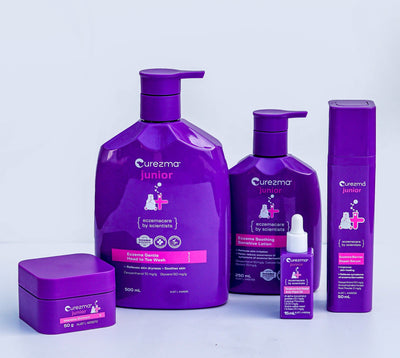Recognise and Treat Symptoms of Dyshidrotic Eczema
Dyshidrotic eczema presents a unique challenge within the spectrum of eczema conditions, characterised by tiny, intensely itchy blisters on the hands and feet. This condition not only affects physical comfort but can also impact emotional well-being. Understanding dyshidrotic eczema, its triggers, and effective management strategies is essential for those seeking relief.

What is Dyshidrotic Eczema?
Dyshidrotic eczema is a form of eczema that leads to the appearance of small blisters on the edges of the fingers, toes, palms, and soles of the feet. These blisters can be painful and are often accompanied by peeling, cracked skin, exacerbating discomfort.
Understanding the Causes of Dyshidrotic Eczema
The exact causes of dyshidrotic eczema are not fully understood, but it is thought to involve genetic and environmental factors. Stress, sweating, and contact with certain metals or irritants can trigger outbreaks. Identifying personal triggers is a crucial step in managing this condition effectively.
Is Dyshidrotic Eczema Contagious?
It's important to clarify that dyshidrotic eczema is not contagious. Misunderstandings around this can lead to unnecessary stigma and isolation for those affected.
Choosing the Right Treatment
Effective management of dyshidrotic eczema often requires a combination of strategies, including avoiding triggers, maintaining skin hydration, and using appropriate topical treatments. For many, finding a treatment that soothes without causing additional irritation is key.
Tips for Reducing Flare-Ups
Preventing flare-ups involves careful attention to skin care and lifestyle:
- Keep Skin Moisturised: Regular use of moisturisers helps prevent dryness and irritation.
- Avoid Triggers: Identify and steer clear of personal triggers, such as specific metals or excessive sweating.
- Protect Your Skin: Wear protective gloves when engaging in activities that may expose your skin to irritants.
Incorporating a gentle, effective cream like Curezma into your care routine can offer additional support. Its steroid-free formula is designed to nurture the skin, helping to restore its barrier and reduce the occurrence of blisters and dryness.
Conclusion
While dyshidrotic eczema can be a persistent condition, understanding its nature and implementing a targeted management plan can lead to significant improvements. Integrating products that support the skin's natural healing process, such as Curezma, into your daily regimen can play a crucial role in achieving and maintaining relief. With the right approach, it's possible to live comfortably despite the challenges of dyshidrotic eczema.








